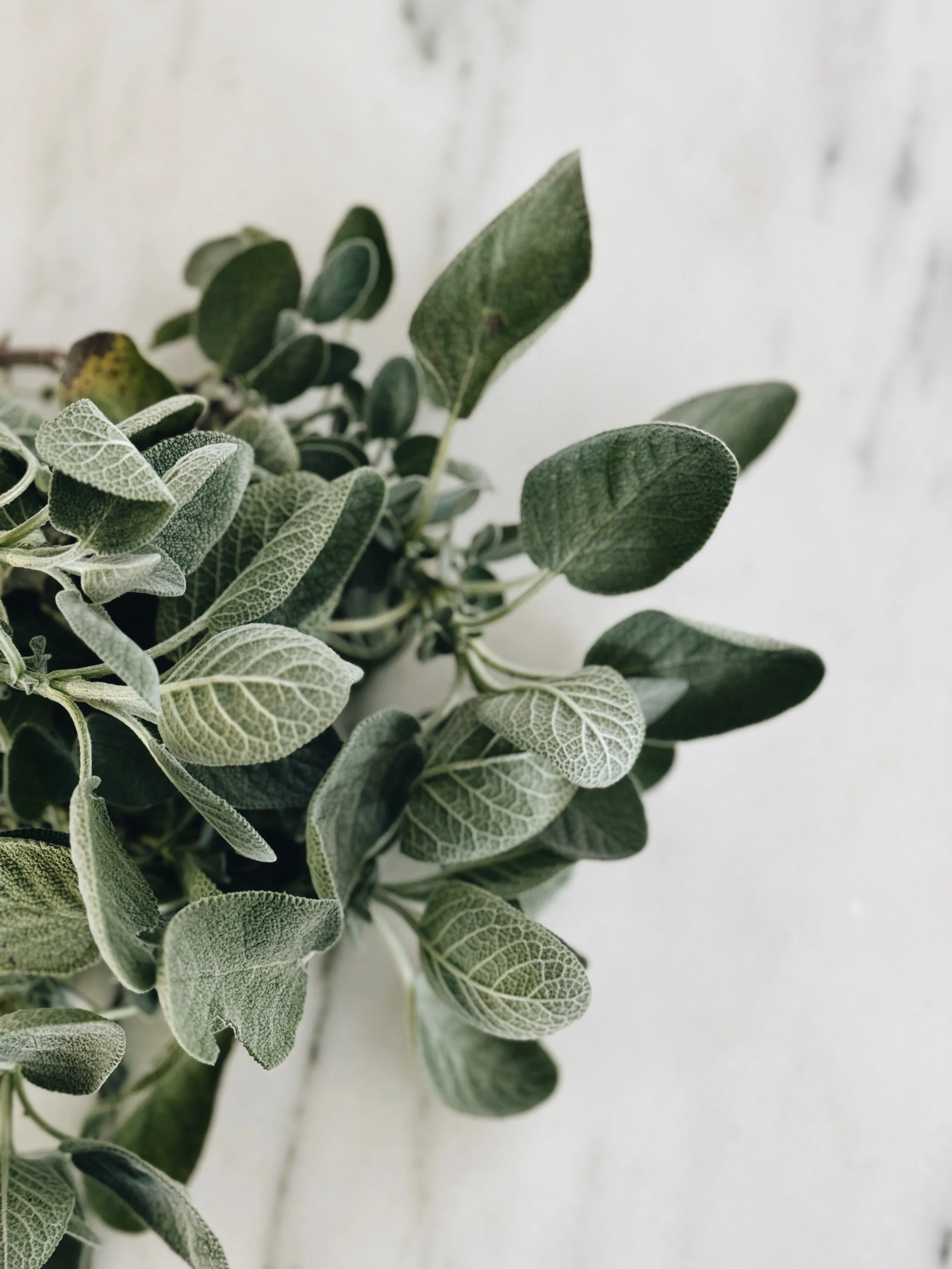Your Guide To Growing Sage - A Hardy, Perennial Herb
Sage might not be the first thing on your mind when starting a vegetable or herb garden. Usually things like tomatoes, basil, and maybe a few pepper plants come to mind.
But let me tell you friend, sage is one of those unsung heroes of the herb garden. It’s tough, versatile, and has a deep, earthy flavor, making a roast, a winter soup, or even a simple tea feel luxurious. And for some, the holidays just wouldn’t be right without the traditional sage stuffing.
If you’re just starting your herb-growing journey or looking to expand your garden, sage is an excellent choice. Whether you’ve got a sprawling backyard or just a few pots on a balcony, sage is easy to grow, maintain, and harvest.
And trust me, once you’ve got fresh sage at your fingertips, you’ll never go back to the dried stuff!
Contents:
Why Grow Sage?
So why should you even bother growing sage? Well, let me tell you—it’s a very rewarding herb to grow for a few reasons:
Resilience: Sage is one tough plant. It’s drought-tolerant, can withstand a bit of neglect, and isn’t too fussy about soil conditions. If you’ve struggled with more sensitive herbs like cilantro or dill, sage might just be your new best friend.
Versatility: Sage isn’t just for Thanksgiving stuffing. Its earthy, slightly peppery, yet fresh flavor, with hints of mint, can elevate anything from roasted vegetables to homemade butter. You can even steep the leaves in hot water for a soothing herbal tea.
Try this yummy, easy Thanksgiving stuffing recipe!
Low Maintenance: Unlike some herbs that need constant watering, pruning, or babysitting, sage is pretty low maintenance. Plant it in a sunny spot, water it occasionally, and you’re good to go.
Perennial: This is a plant that keeps on giving. Once established, sage can last for several years, providing you with fresh leaves season after season. That’s an investment worth making!
Pollinator Magnet: Sage flowers attract bees, butterflies, and other pollinators to your garden, making it a great companion for other plants.
Types of Sage
Before you dive headfirst into growing sage, it’s important to know that not all sage is created equal.
There are several types of sage out there, and while they all have their own charm, some are better suited for culinary uses, while others are more ornamental.
These are some of the more common types:
Common Sage (Salvia officinalis)
This is the one you’ll want if you’re after culinary sage. It has silvery-green leaves, with purple-blue flowers, and a slightly peppery, earthy taste. This is your go-to for stuffing, sauces, and even teas. It is very hardy and bounces back in the spring even after a severely cold winter.
Purple Sage
This variety is similar to common sage but with beautiful purple leaves. Not to be confused with the ornamental purple sage (or purple salvia), this variety doesn’t bloom often like other garden sages. It’s equally as tasty and adds a bit of color to your herb garden.
Golden Sage
With variegated gold and green leaves, golden sage is a creeping sage and is slightly milder in flavor compared to common sage. It’s a perfect ornamental addition to flower beds or herb gardens.
Pineapple Sage (Salvia elegans)
As the name suggests, pineapple sage is a flowering perrenial and has a sweet, fruity aroma. It’s more ornamental, but the leaves can be used in teas, and the bright red flowers attract butterflies and hummingbirds.
Scarlet Sage (Salvia splendens)
This annual ornamental plant thrives in full sun but withstands partial shade in well-draining soil with consistent irrigation. Its scarlet-colored blossoms last from late spring through the first frost.
Clary Sage (Salvia sclarea)
Known more for its essential oils and medicinal uses than for culinary purposes, clary sage has a unique scent and large, showy flowers. It’s a great option for those interested in aromatherapy.
Once you’ve decided on the type of sage that suits your needs, it’s time to start planning when, where, and how to grow it!
* Images from the web
When to Plant Sage
Spring Planting
Sage is a warm-weather lover, so it’s best to plant it in the spring once the risk of frost has passed. For best growth, the soil should be between 60º and 70ºF.
If you’re starting from seeds indoors, you’ll want to begin about 6-8 weeks before the last frost date in your area.
For those who prefer planting seedlings, just wait until the soil warms up in late spring.
One of the best things about sage is that it can tolerate cooler temperatures, so it will keep growing into fall in many regions. Just give it a head start in the spring to enjoy a robust harvest!
Fall Planting
You can plant sage in the fall, but the success depends on your local climate and conditions. In regions with mild winters, USDA zones 7 or higher (like us), planting sage in the fall can actually be beneficial. The cooler temperatures and increased rainfall help the plants establish their root systems without the stress of summer heat.
If you want to plant in the fall, I highly recommend using seedlings rather than starting from seed. Seedlings are more mature and have a better chance of establishing quickly before winter arrives.
Where to Plant Sage
Sage thrives in both garden beds and containers, making it perfect for various spaces.
Sunlight
Sage loves sunlight, so aim to plant it in a spot with at least 6 hours of direct sunlight daily. If you’re in a particularly hot climate, a little afternoon shade can help protect it from the harshest rays.
Soil
Sage isn’t too picky about soil, but it grows best in well-draining soil. If you’re working with clay-heavy soil, consider amending it with some sand or compost to improve drainage. Sage doesn’t like to sit in soggy soil, as that can lead to root rot.
Space
If you’re planting sage in a garden bed, space each plant about 18-24 inches apart. Sage plants can grow bushy, so giving them room to breathe ensures good air circulation and prevents diseases.
For container gardeners, ensure your pot has good drainage holes, and choose a container at least 12 inches wide and deep. Sage’s roots don’t spread out too much, but they do appreciate the space to grow vertically.
How to Plant Sage
In-Ground Planting
1. Prepare the Soil: Loosen the soil and mix in some compost to ensure good drainage. You want the soil to be light and crumbly.
2. Planting Depth: Plant sage at the same depth it was growing in its pot or seedling tray. Bury the root ball, but keep the stem above ground. Space each plant about 18-24 inches apart.
3. Watering: Water well after planting, but don’t overdo it. Sage likes to dry out a bit between waterings, so let the soil dry to the touch before watering again.
Container Planting
1. Choose a Pot: As mentioned earlier, select a pot with good drainage and at least 12 inches in diameter. Sage can grow quite large, so don’t skimp on space.
2. Soil Mix: Use a high-quality potting mix with added perlite, compost, or sand to improve drainage. Herbs like sage don’t need heavy, water-retentive soil.
3. Planting: Similar to in-ground planting, place the sage in the pot at the same depth it was in its previous container. Gently firm the soil around the plant, and water it lightly.
homegrown community
Whether you want to return to simple country living, start a homestead, get advice on growing veggies, care for farm animals, or learn the art of home canning, our Homegrown community would be the place for you!
With a growing library of over 100 videos, we share tried-and-tested ideas for your kitchen, garden, farm, and home!
Caring for Sage
Once planted, sage is one of those set-it-and-forget-it herbs. Many of us can do with that, right?! However, a little TLC goes a long way in keeping your sage plant healthy and productive.
Watering
Sage doesn’t need much water. In fact, overwatering is a common mistake. Water deeply but infrequently, allowing the soil to dry out between waterings.
Pruning
Regular pruning encourages bushy growth. After the plant flowers in late spring or early summer, trim it back to prevent it from becoming leggy. You can also pinch off the tips to promote more leaves and prevent it from bolting.
Fertilizing
Sage isn’t a heavy feeder, but you can add a bit of compost or organic fertilizer in early spring to give it a boost. Avoid high-nitrogen fertilizers, as they can cause the plant to grow more foliage but weaken the flavor.
Mulching
In colder regions, add a layer of mulch around the base of the plant in late fall to protect it from harsh winter conditions. Sage can survive mild frost but may struggle in prolonged freezing temperatures.
Harvesting and Storing Sage
Sage is ready to harvest once it has a decent amount of leaves, usually about 70-75 days after planting. The best part? The more you harvest, the more it grows!
Harvesting
During the first year, harvest lightly to ensure that the plant grows fully. Use scissors or pruning shears to snip off the leaves, starting with the older, outer leaves first. Always leave a few inches of growth on the plant to keep it healthy and productive.
Drying
If you cannot enjoy your sage fresh, it dries exceptionally well. To dry, tie the stems together and hang them upside down in a dry, well-ventilated area. Once the leaves are fully dry, crumble them into a jar and store them in a cool, dark place.
Freezing
You can also freeze sage (the best way to preserve its flavor). Just wash and dry the leaves, then place them in a freezer-safe bag. Frozen sage retains much of its flavor and can be added directly to soups, stews, and roasts.
Pests and Diseases
Sage is generally a hardy plant, but like all plants, it can be susceptible to pests and diseases.
Aphids: These tiny insects can suck the sap from sage leaves, causing them to curl or yellow. A strong spray of water or an insecticidal soap can help get rid of them.
Spider Mites: These little pests thrive in hot, dry conditions. You can spot them by the tiny webs they leave on the underside of leaves. A quick rinse with water usually does the trick.
Powdery Mildew: If your sage is in a damp, shady spot, you might notice a white, powdery mildew on the leaves. To prevent this, ensure good air circulation and avoid overhead watering. If mildew appears, remove affected leaves and treat the plant with a fungicide if necessary.
companion Planting with Sage
One of the great things about sage is that it plays well with others. Companion planting is a great way to make the most of your garden space, and sage has several benefits for neighboring plants.
Good Companions
Sage pairs well with carrots, tomatoes, brassicas (like cabbage and broccoli), and rosemary because it can repel pests like cabbage moths and carrot flies.
Not-so-Good Companions
Avoid planting sage near cucumbers, as it can stunt their growth. Sage also doesn’t do well next to onions, so give it some space.
Growing sage is a rewarding experience for any gardener, whether you’re a seasoned pro or just starting out!
It’s hardy, low-maintenance, and incredibly versatile. Plus, there’s nothing quite like the feeling of snipping fresh sage leaves from your own garden to add to a meal.
Give it a try—you might just find that sage becomes one of your new favorite herbs, too!
Hosting a family gathering this fall? Have a look at this blog for some inspiration:
Setting the table for a family fall feast
And I think you’ll like these blogs too:
Growing herbs: All the essentials to know
23 Herbs and flowers for organic pest control in the garden
Love, Annette xx












